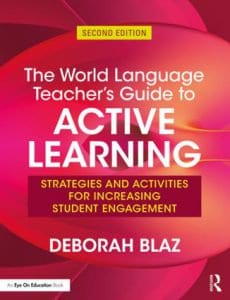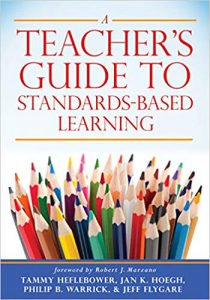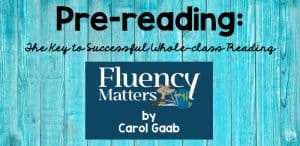UPDATE, 11/20: EVACUATION OVER AND POWER RESTORED :)
Language Magazine’s office and the homes of most of our team have been under mandatory evacuation for the last week due to Southern California’s Woolsey Fire, but we are hopeful that evacuation orders will be lifted within the next few days and that we will then be able to resume normal operations.
We apologize for not responding to queries and requests over the last few days.
We would like to take this opportunity to recognize all agencies, firefighters, and volunteers who are fearlessly and courageously putting forth the effort to assist those who have suffered loss during the recent fires in Northern and Southern California. With the challenging weather, this has been an uphill battle. In the Woolsey Fire specifically, there have been three fatalities, over 97,620 acres have been burned, and we are at 47% containment. More than 4,000 structures have been destroyed, with 57,000 structures still at risk, and 250,000 people have been under mandatory evacuation.
For the most current information on the Woolsey Fire, follow this link: https://bit.ly/2Ft4rl9
You can also follow the Los Angeles County Fire Department Twitter account @LACoFDPIO
If you are looking to donate, please see the below list to help those affected by the Woolsey and Hill Fires: Los Angeles County Fire Department Foundation: http://www.lacfdf.org/, American Red Cross: https://www.redcross.org/,Fire Relief Fund through the Entertainment Industry Foundation: https://bit.ly/2MP6zmk



 According to the largest language census in Indian history, Hindi added 100 million new speakers between 2001 and 2011—a 25% rise, while 19,569 different languages or dialects were described as a “mother tongue” by the 1.21 billion people in the country. Of these languages, only 121 have 10,000 speakers or more.
According to the largest language census in Indian history, Hindi added 100 million new speakers between 2001 and 2011—a 25% rise, while 19,569 different languages or dialects were described as a “mother tongue” by the 1.21 billion people in the country. Of these languages, only 121 have 10,000 speakers or more. Google Trends, which tracks the use of search terms, tweeted this morning that “Dónde Votar” was the top trending search on Google, spiking by more than 3,000%. Within an hour of the tweet, Priorities USA Action, a Democrat super PAC, translated its voter mobilization ads online to Spanish, specifically for voters in Arizona and Florida.
Google Trends, which tracks the use of search terms, tweeted this morning that “Dónde Votar” was the top trending search on Google, spiking by more than 3,000%. Within an hour of the tweet, Priorities USA Action, a Democrat super PAC, translated its voter mobilization ads online to Spanish, specifically for voters in Arizona and Florida.
 For the first time ever, the No 1 album in the U.S. features lyrics sung mostly in Korean. Love Yourself: Tear by K-pop group BTS clinched the No 1 spot last month, surprising many industry analysts.
For the first time ever, the No 1 album in the U.S. features lyrics sung mostly in Korean. Love Yourself: Tear by K-pop group BTS clinched the No 1 spot last month, surprising many industry analysts.
 U.S. Department of Education data show that English learners in grades K–12 in U.S. public schools in the 2015–16 school year numbered over five million students—about 10 percent of all enrolled students—and that roughly three-fourths of public school districts included students who are English learners. Many teachers, including those in small and rural districts, have one or more English learners in their classrooms—or soon will—and these teachers often use technology when instructing their English learners.
U.S. Department of Education data show that English learners in grades K–12 in U.S. public schools in the 2015–16 school year numbered over five million students—about 10 percent of all enrolled students—and that roughly three-fourths of public school districts included students who are English learners. Many teachers, including those in small and rural districts, have one or more English learners in their classrooms—or soon will—and these teachers often use technology when instructing their English learners. The German Research Foundation (DFG) has granted a Reinhart Koselleck Project to Prof. Dr. Monika Fludernik of the Department of English at the University of Freiburg. The foundation awards aid to people with outstanding reputations in research. The program’s aim is to support scholars pursuing exceptionally innovative projects or those that involve a high level of positive risk. Fludernik’s award has an endowment of €1 million ($1.2 million). Her project, “Diachronic Narratology,” aims to expand the current narratological model. The latest DFG grant means there are now six Reinhart Koselleck Projects at the University of Freiburg.
The German Research Foundation (DFG) has granted a Reinhart Koselleck Project to Prof. Dr. Monika Fludernik of the Department of English at the University of Freiburg. The foundation awards aid to people with outstanding reputations in research. The program’s aim is to support scholars pursuing exceptionally innovative projects or those that involve a high level of positive risk. Fludernik’s award has an endowment of €1 million ($1.2 million). Her project, “Diachronic Narratology,” aims to expand the current narratological model. The latest DFG grant means there are now six Reinhart Koselleck Projects at the University of Freiburg.
 Routledge’s books for K–12 world language teachers include The World Language Teacher’s Guide to Active Learning, 2nd Edition: Strategies and Activities for Increasing Student Engagement, by Deborah Blaz (9781138049574; $34.95), as well as Differentiated Instruction, 2nd Edition: A Guide for World Language Teachers, by Deborah Blaz (9781138906181; $35.95). These books provide a plethora of practical strategies that are easy to implement and that will help teachers personalize instruction, keeping students engaged in language learning. Free downloadable versions of some of the tools and handouts in these books are available on the Routledge website (search book and then e-resources tab), so teachers can print and distribute them for immediate classroom use. Routledge also publishes books on dual-language instruction and culturally responsive teaching. An Educator’s Guide to Dual Language Instruction: Increasing Achievement and Global Competence K–12, by Gayle Westerberg and Leslie Davison (9781138946576; $35.95), features step-by-step instructions and strategies, as well as inspirational stories from educators in urban and rural dual-language programs across the country. Topics include choosing a model for a dual-language program and involving stakeholders; implementing a standards-based instructional framework focused on direct vocabulary instruction; setting proficiency targets and using internal and external assessments to track students’ progress; and incorporating technology. Determining Difference from Disability: What Culturally Responsive Teachers Should Know, by Gerry McCain and Megan Farnsworth (9781138577756; $34.95), offers clear guidelines for determining if the culturally or linguistically diverse (CLD) students/English language learners (ELLs) in a general education classroom are experiencing typical language differences, learning disabilities, or both.
Routledge’s books for K–12 world language teachers include The World Language Teacher’s Guide to Active Learning, 2nd Edition: Strategies and Activities for Increasing Student Engagement, by Deborah Blaz (9781138049574; $34.95), as well as Differentiated Instruction, 2nd Edition: A Guide for World Language Teachers, by Deborah Blaz (9781138906181; $35.95). These books provide a plethora of practical strategies that are easy to implement and that will help teachers personalize instruction, keeping students engaged in language learning. Free downloadable versions of some of the tools and handouts in these books are available on the Routledge website (search book and then e-resources tab), so teachers can print and distribute them for immediate classroom use. Routledge also publishes books on dual-language instruction and culturally responsive teaching. An Educator’s Guide to Dual Language Instruction: Increasing Achievement and Global Competence K–12, by Gayle Westerberg and Leslie Davison (9781138946576; $35.95), features step-by-step instructions and strategies, as well as inspirational stories from educators in urban and rural dual-language programs across the country. Topics include choosing a model for a dual-language program and involving stakeholders; implementing a standards-based instructional framework focused on direct vocabulary instruction; setting proficiency targets and using internal and external assessments to track students’ progress; and incorporating technology. Determining Difference from Disability: What Culturally Responsive Teachers Should Know, by Gerry McCain and Megan Farnsworth (9781138577756; $34.95), offers clear guidelines for determining if the culturally or linguistically diverse (CLD) students/English language learners (ELLs) in a general education classroom are experiencing typical language differences, learning disabilities, or both.
 In A Teacher’s Guide to Standards-Based Learning, published by Marzano Research, authors Tammy Heflebower, Jan K. Hoegh, Philip B. Warrick, and Jeff Flygare detail a sequential approach for implementing standards-based learning in K–12 classrooms.
In A Teacher’s Guide to Standards-Based Learning, published by Marzano Research, authors Tammy Heflebower, Jan K. Hoegh, Philip B. Warrick, and Jeff Flygare detail a sequential approach for implementing standards-based learning in K–12 classrooms. Have you ever read a book and laughed out loud? Has a book or other text ever made you cry, get angry, or feel scared? If you are reading Language Magazine, the odds are high that your answer is “yes!” While strong readers feel a wide range of emotions directly related to the type of text they are reading, weak readers generally feel only one emotion when they read: frustration. Limited literacy skills present a huge obstacle to learning in general, and although being preliterate does not make language acquisition impossible, it certainly does slow down the process and limit language potential. Individuals who read frequently generally have much larger vocabularies than those who do not. This is true of one’s first language or one’s second. Language learners who read more consistently have larger vocabularies, better verbal skills, better writing, and more sophisticated grammar. The numerous benefits of reading for language acquisition make improving literacy skills a worthwhile endeavor. Reading, however, will not aid acquisition until learners have reached a minimum threshold of vocabulary knowledge through auditory exposure. Beginning language learners can only decode text (connect the written word to the spoken word) when they have already heard the words they see. The key to successfully using reading as a tool to enhance and accelerate the rate of acquisition is to focus on prereading strategies rather than how-to-read strategies. The most powerful prereading strategies are ones that emotionally engage learners. Start by previewing the reading and identifying two to three topics that interest learners. Seek out personal connections and build background knowledge, while strategically weaving new (upcoming) vocabulary into the lessons. Learn powerful prereading strategies at ACTFL 2018 or tune into the livestream session at https://www.facebook.com: “Prereading: Priming the Pump.”
Have you ever read a book and laughed out loud? Has a book or other text ever made you cry, get angry, or feel scared? If you are reading Language Magazine, the odds are high that your answer is “yes!” While strong readers feel a wide range of emotions directly related to the type of text they are reading, weak readers generally feel only one emotion when they read: frustration. Limited literacy skills present a huge obstacle to learning in general, and although being preliterate does not make language acquisition impossible, it certainly does slow down the process and limit language potential. Individuals who read frequently generally have much larger vocabularies than those who do not. This is true of one’s first language or one’s second. Language learners who read more consistently have larger vocabularies, better verbal skills, better writing, and more sophisticated grammar. The numerous benefits of reading for language acquisition make improving literacy skills a worthwhile endeavor. Reading, however, will not aid acquisition until learners have reached a minimum threshold of vocabulary knowledge through auditory exposure. Beginning language learners can only decode text (connect the written word to the spoken word) when they have already heard the words they see. The key to successfully using reading as a tool to enhance and accelerate the rate of acquisition is to focus on prereading strategies rather than how-to-read strategies. The most powerful prereading strategies are ones that emotionally engage learners. Start by previewing the reading and identifying two to three topics that interest learners. Seek out personal connections and build background knowledge, while strategically weaving new (upcoming) vocabulary into the lessons. Learn powerful prereading strategies at ACTFL 2018 or tune into the livestream session at https://www.facebook.com: “Prereading: Priming the Pump.”